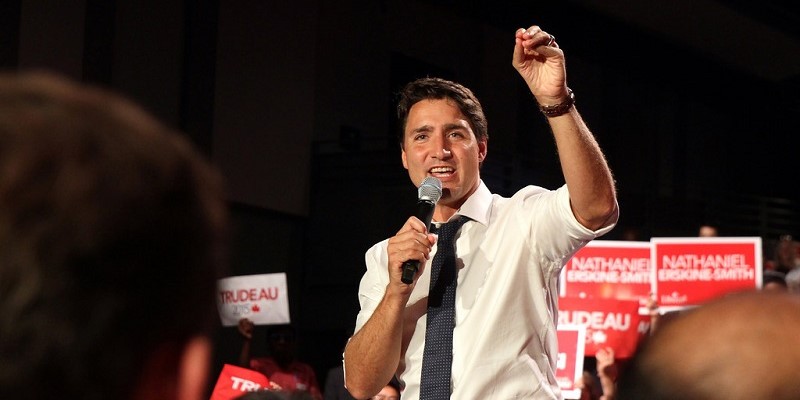Trudeau government rejects almost every principle of historic 1995 Liberal budget

If recent history is any guide, the Trudeau government will table its next federal budget sometime next month. Last month, however, marked the 25th anniversary of the 1995 budget, the most important and historic in at least a half century. Not only did the 1995 budget solve a three-decade long problem of overspending that led to large and increasing deficits and debt, but it also reformed federal-provincial relations for the better and laid the foundation for tax relief that strengthened Canadian competitiveness and improved economic performance.
In light of the Chrétien government’s achievements, it’s worth considering how the current government has rejected almost every principle of the 1995 budget.
The first and most obvious difference is the two governments’ approach to deficits (or the willingness to borrow money to finance spending today that exceeds available revenues). The Chrétien government took decisive action to eliminate a near $40 billion deficit when they took office.
In contrast, the Trudeau government purposefully went into deficit to finance increased spending. While initially promising to run deficits for just three years totalling $25.1 billion, the Trudeau government ended up running deficits estimated at $77.0 billion with no end in sight.
Moreover, the Chrétien government imposed a comparatively strict fiscal rule on itself—continue to balance the budget and pay down the national debt, which meant running surpluses each year. This enabled them to reduce the national debt (specifically the accumulated deficit) from $562.8 billion in 1996-97 to $481.5 billion in 2005-06 when the Liberals were unseated by the Tories.
The Trudeau government, on the other hand, has imposed a much weaker rule on itself—lowering the level of debt compared to the size of the economy. This weaker rule allows the government to continue borrowing and increasing the debt so long as it increases at a rate less than the economy is growing. This has resulted in the national debt increasing from $628.9 billion the year before they took office to an estimated $713.2 billion this year (2019-20).
And it’s not even clear the degree to which the government will actually hold itself to this rule since the ratio of debt-to-the-economy increased in violation of the rule between 2018 and 2019.
Another key difference between the 1995 budget and today’s budgets are taxes. As the Liberals explained then, tax cuts should only be considered when the budget is balanced otherwise taxes are simply being deferred to the future. In addition, the Liberals then were committed to tax relief that improved the country’s competitiveness and the “incentives for Canadians to learn, work, save and invest.” This led to major personal income tax reductions as well as cuts to the capital gains tax.
In contrast to the 1995 budget as well as their own rhetoric, the current Liberals have increased personal income, payroll and capital gains taxes. They increased the personal income tax rate imposed on entrepreneurs, business owners, and professionals from 29 per cent to 33 per cent. And while they lowered the personal income tax rate for middle-income earners, they simultaneously eliminated a host of tax credits, which resulted in personal income taxes being higher for 81 per cent of middle-income families.
The government (along with the nine participating provinces) also increased the Canada Pension Plan tax. All told, once the CPP tax increase is fully implemented, 98.8 per cent of middle-income families will experience a tax increase.
Unlike the Chrétien government and the 1995 budget, which empowered the provinces through decentralization and led to generally improved federal-provincial relations, the Trudeau government has favoured a much more centralized muscular approach to federal-provincial relations, leading to increasing strains.
The enormity of the successes of 1995 budget should inform Canadians and policymakers about the benefits of sound fiscal policies—balanced budgets, lower debt, prioritized spending and lower taxes to ensure competitiveness. This budget season, the 25th anniversary of the ’95 budget gives the current government an opportunity to genuinely reflect on this past success—and its own markedly different approach.


